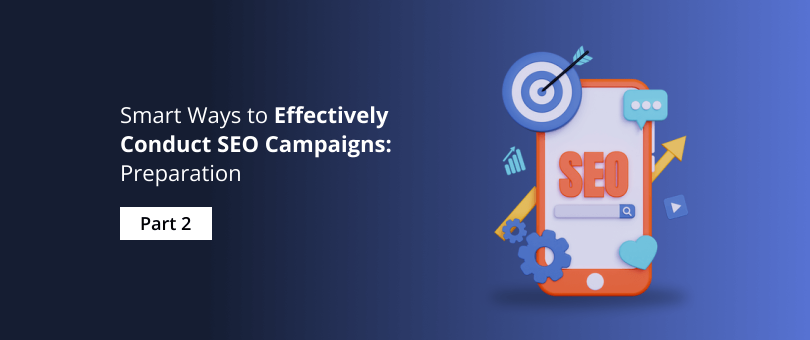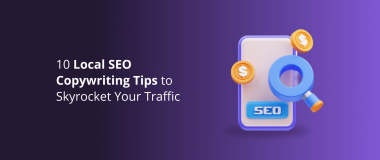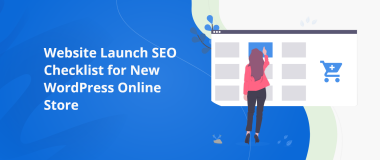After preparing for your SEO campaign, it’s time to get things done. Let’s see what are the tactics you can use to make your campaign successful.
12 Tactics to Effectively Conduct SEO Campaigns
- Engage your readers.
- Longer content.
- Get on YouTube.
- Work on your website speed.
- Know what users are searching for.
- Backlinking.
- Optimize your landing pages.
- Optimize your website for mobile devices.
- Optimize for RankBrain.
- Write roundup articles.
- Write guest posts.
- Use deep linking.
1. Engage Your Readers
You might be wondering how to make users spend more time on your website. The straightforward way is to keep the user’s attention to your content.
The time that users spend on your website also becomes one of the crucial factors towards a better search engine ranking.
Contrary to was believed in the past, Google does not user engagement as a ranking factor. Still, Backlinko analyzed over 11 million search results that led to some interesting correlations between high-quality content, which engages users more, and higher rankings.
If we look at this from Google’s perspective, we see that if a particular user spends time on your webpage, it’s because they find the page useful and want to explore it further.
So, in the end, it’s very likely that Google will promote content where users have spent a sizable amount of their time after a specific search query.
Here are the two best ways to keep the users engaged on your website and decrease your website’s bounce rate:

- Make your posts easier to read. Improve your page’s readability score by properly formatting your content. This will improve the engagement rate of your website. Try to write shorter paragraphs, with no more than 100 words. Also, shorter sentences are better to keep the user reading, not more than 20 words. When you write an article, make content scannable with headers, sub headers and bullet points.
- Use media in your content. As mentioned above, you should only use high-quality images, photos, videos, and infographics across your content to increase the time that the users spend on your page. This will help you segment your content and most importantly, enhance your intent.
2. Longer Content
Studies claim that longer content tends to rank higher in Google’s search results and that the average result on Google first page contains 1,890 words.
However, writing long-form content is not an easy task. It is a process that is intense and can take a lot of time. If you don’t have the time and resources to write a content piece that is longer than 2000 words, you can always update your current content and turn it into a long-form piece.
Related: Time to Nail it: The Ideal Length of Your Online Content – DevriX
In fact, if your previous posts have already yielded good results on Google, you can now update them with new observations, information or findings, according to the latest topic trends. This will further strengthen the overall ranking of the original post.
3. Get on YouTube
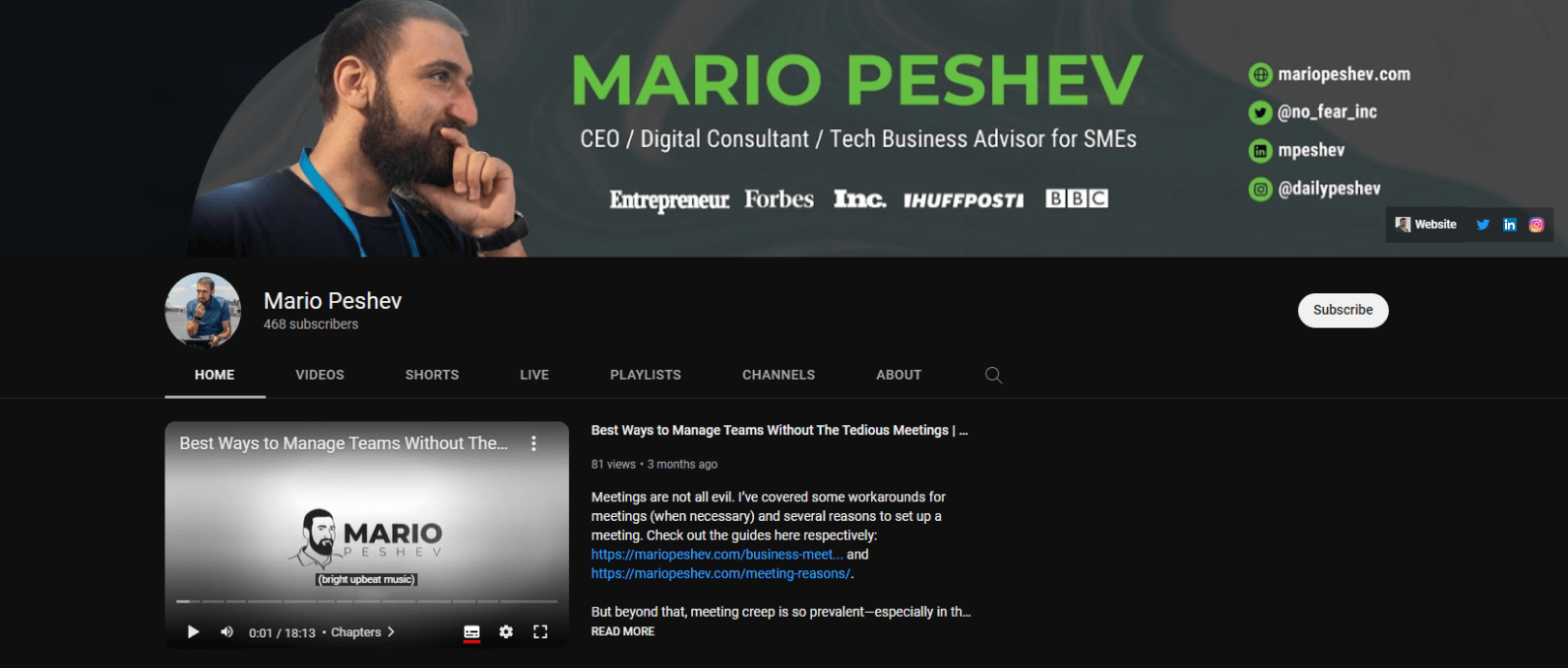
Video has emerged as one of the best content choices that marketers can use to capture the customer’s attention. And that is no surprise, considering the fact that video is the most easily digestible content out there.
There’s no reason not to start producing videos for YouTube and focus on YouTube SEO. When you optimize your YouTube video for a better search ranking, keep in mind the following:
- Use your main keyword as the video filename. If you upload an image onto your website, you need to include the main keyword of the page where the image will reside. The same goes for your video filename when you upload it to YouTube.
- Video titles should be at least 5 words long. The reason for this is simple, you’ll need room to include your main keyword.
- The more YouTube knows about the video, the better. Good video descriptions are vital to improve your search rankings with YouTube. The same method that Google scans your blog posts is applied on YouTube. Google scans your video description to get a sense of what the video is about. The more Google knows, the better. But keep the video description under 200 words.
- Include the proper tags. If you cover every relevant word in your video tags section on YouTube, your video has a better chance of climbing higher in the rankings. These tags are of big importance because they help your video to be featured on the “related videos” sidebar.
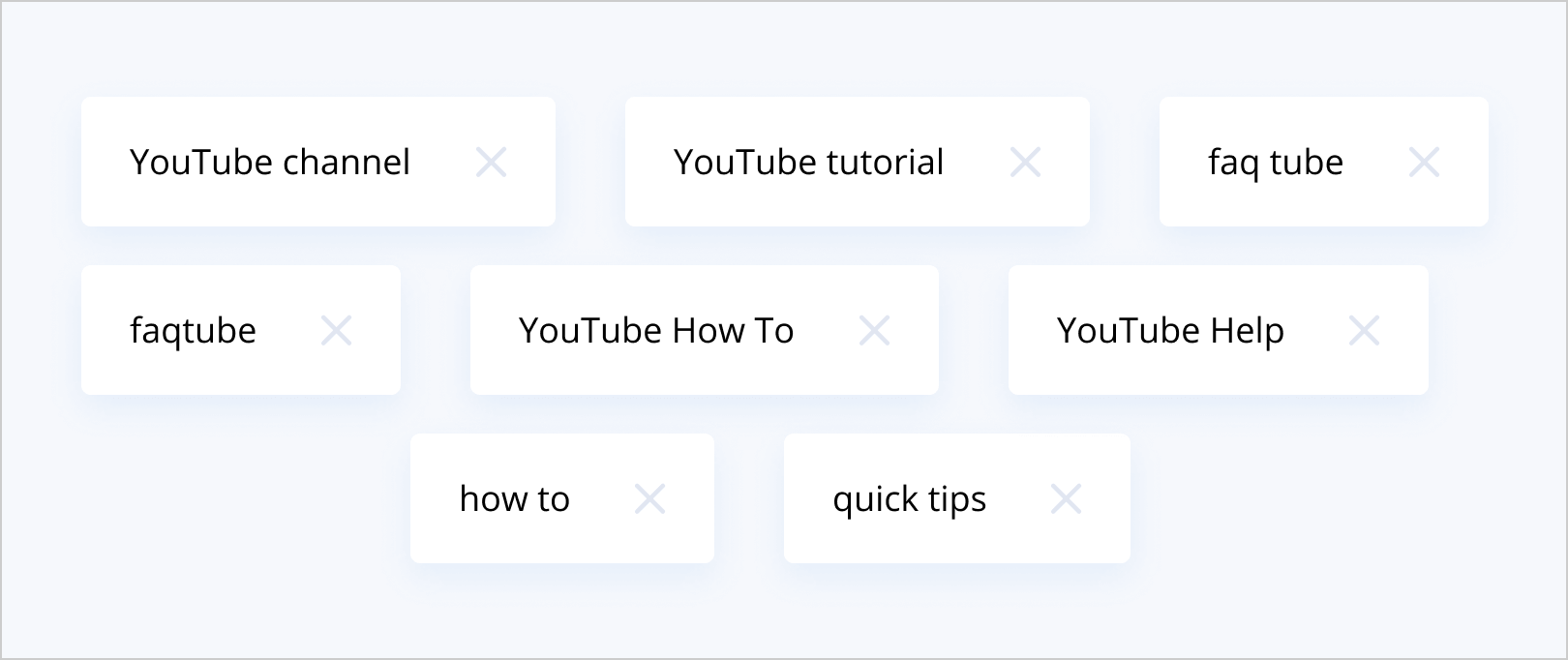
- Invite people to share your videos. Always encourage your viewers to like and share. Why? Because Google wants to see that you create content that people enjoy. And Google will reward you with better search engine ranking as a result.
- Promote your YouTube videos. The same thing you do with your articles (link building and outreaching to influencers), you need to do with your YouTube videos too, if you want to successfully promote them. Higher numbers of views and a bigger number of subscribers bring better search ranking results.
Related: How To Use Marketing Videos to Drive Traffic to Your Site
4. Work on Your Website Speed
Since 2010, Google uses your website speed as one of the main search engine ranking factors. Furthermore, Google launched its PageSpeed tool that provides web developers with information about the performance of their websites.
This led to the Accelerated Mobile Pages Project that has a mission to increase mobile website speed.
It’s more than obvious that Google wants all of us to have better and faster websites and to offer a better experience to consumers as a result.
Which is why you need to work on your webpage speed. Not just because it could increase your search engine rank, but because you will ensure a better UX for your customers.
Like we said earlier on in this article, your customers may not return to your website if they have to wait a couple of seconds longer than normal for a page to load.
Related: 6 Main Reasons Why Your WordPress Website Loads Slow – DevriX
5. Know What Users Are Searching for
Google may look like a simple search tool, but in fact, its algorithm constantly works and improves internally. As a search engine, the main goal of Google is to get a full grasp of the user’s intention when they enter the phrase in the search bar.
Before you start creating content for your SEO campaign, keep in mind that you can’t rely on general keywords anymore. Users are now searching for rich information, and that’s what Google aims to provide. So if you want to succeed with your SEO campaign, you must focus your content strategy around specific search queries.
To know and predict what your users search for online, here are the two best things to focus on:
- Your target audience. The content that you develop must be related to your target audience. The more you know about your target audience, the more quality your content will offer. Without a quality content, you will lose customers and your search ranking will go down.
- Have categories for your content. Group your content into categories. Make sure to offer different topics from every category that solve a different problem for your target customer.
6. Backlinking
Backlinks also called “inbound links” or “incoming links,” are created when one website links to another. The link to an external website is called a backlink.
Backlinking is pivotal if you want your website to rank well on Google. Backlinks are still one of the most dependable factors when it comes to your search engine ranking. This tells us that even if you have decent content, it’s really hard to have a good ranking on Google without backlinks.
Before you begin your backlink strategy for SEO, you have to be aware that not every backlink can push you higher on the search ranking scale. In fact, some backlinks can have a devastating effect on your SEO. For that reason, your focus should be on obtaining high-quality backlinks.
Some of the best ways to get quality backlinks that lead to your site are:
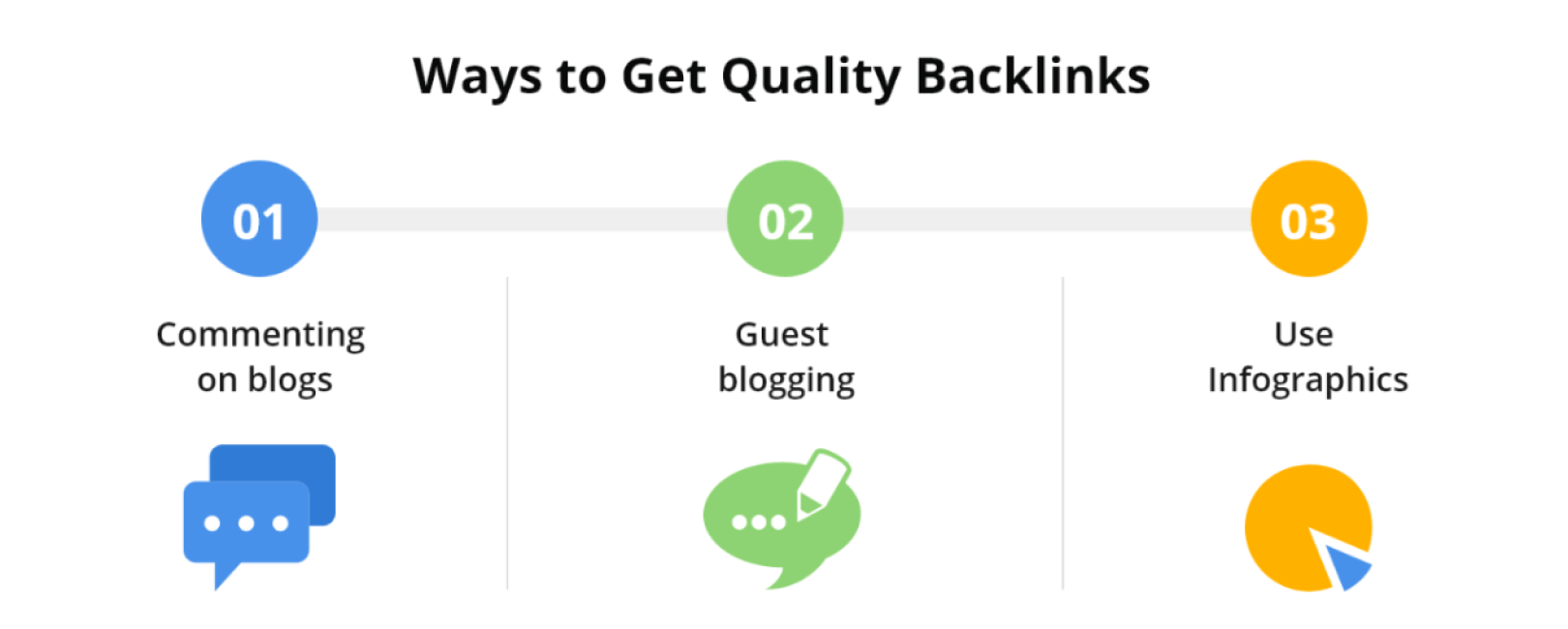
- Commenting on blogs. To do this successfully, you have to constantly read and engage with the blog that you’re targeting for backlinks. Read thoroughly the comments on the blog, and never post just a blatant comment and your link. Make sure to write a comment that adds value to the blog post. Then you can add your link so that users can learn more about the topic.
- Guest blogging. Do this on an authority website within your industry, and your search engine rankings will skyrocket. You will form a relationship with authoritative bloggers from the industry and get a lot of web traffic as a result too.
- Use Infographics. If you want to outreach and make people share your infographic, the content has to be flawless. When you post your infographic on your blog, you will want to find websites in your industry that can use the infographic to educate their audiences. When you do your outreach, provide value upfront to the owners of these websites and if they ask you to create a brand-new infographic for them, do it. Include text alongside your infographic where you can place a link to your website.
7. Optimize Your Landing Pages
A properly designed landing page can significantly boost your lead conversion and sales. A great landing page can also increase your web traffic and better your search rankings.
Optimizing your landing pages for your SEO campaign is an excellent way to reach your target customers and invite them into your sales funnel.

When a user types in a specific search query, Google may not come back with your homepage as a result.
Instead, Google might send users straight to the landing page on your website that provides them with what they were looking for. That’s why each page of your website, including landing pages, should be optimized for specific target keywords.
There are a handful of vital elements that you should keep an eye on when you optimize your landing pages:
- Be as specific as possible. Your landing page needs to be based on a specific product or service, or questions that your target users may enter into the Google search bar. If you offer more than one product or service, you can create different landing pages using different keywords for each of them.
- Social proof. You can’t expect people to be convinced by a product’s description and pricing only. One of your biggest selling points is your customer’s testimonials and product success stories. Positive reviews build trust, and they do the convincing for you.
- Call to action (CTA). You need to include CTAs in your webpage to capture potential leads and make them purchase from your website. Add a form to collect contact information, and use a solid CTA text to indicate to the users what they should do next after they visited your landing page.
To make sure that your landing page is completely SEO optimized, focus on the following:
- Long-tail keyword. These keywords are phrases that are more precise than the ones people are more likely to type into a browser’s search bar. That’s why they are invaluable to your landing page. Use main long-tail keywords on your landing page, in the content of the page, in the main headline, image alt text, and at least in one of the sub-headings.
- Provide value. You can’t persuade people to convert when they visit your landing page if you don’t provide them with something of value. This should be the primary goal of your SEO campaign. You need to create an offer that will make them subscribe immediately, like a free guide, ebook, or an online course.
- Magnetic headline. Your landing page headline is the first impression that visitors have of your landing page. This headline should be captivating enough that it will turn the visitor into a qualified lead or customer. It should also persuade people to engage further with your landing page.
- Professional design. Your landing pages must look professional and contemporary. If your content is excellent, but the design is terrible, then you will never convert visitors into customers. Your landing page design is what makes the page unique and relevant.
8. Optimize Your Website for Mobile Devices
Back in 2016 Google announced an update of their search algorithm that awards websites with better organic search rankings if they’re mobile friendly (responsive). With all the advancements in mobile technology in the past decade, the mobile web traffic percentage grew from 0.7% in 2009 up to staggering 58.99 in 2022.
These statistics demonstrate that you simply can’t afford to run a business online without a mobile version of your website. Making your website mobile-friendly is a must because:
- Google supports mobile-friendly websites. Simply put, websites that are optimized for mobile rank better than the ones that are not.
- People use mobile devices 24/7. Smartphones are used for texting, gathering information, reading, social media, shopping and much more. Users want to be connected 24/7 and have what they’re looking for in their palm of their hands. If your website is not optimized for mobile, your information can’t reach this rising group of internet users.
- You’ll build brand credibility. With a mobile-friendly webpage, you can offer a better user experience to your target customers while assuring them that you’re up-to-date with the latest industry and technological trends.
- You’ll reach more people. By having a mobile-friendly website, the possibility to be seen by more people is immediate. This instantly opens doors and increases your chances of reaching a wider customer base.
9. Optimize for RankBrain
Search engines have come a long way since the introduction of Google back twenty years ago. If you want to be successful with your search ranking strategies, you need to keep track of the latest Google algorithm changes and with the best SEO actions.
One of the crucial factors that Google uses to rank your website is an algorithm called RankBrain. It’s an AI system that improves search results analyzing. It can inspect the content on your page and how it is relevant to what users are searching for.
What RankBrain does is estimate whether the user wanted the first option from a given Google search, based on the millions of other previous searches about the same topic. It tells Google spiders how to index your website based on the context of your pages.
So, if you want to optimize your page content for RankBrain, you need to use Latent Semantic Indexing instead of Keyword Stuffing.
This means that you need to include synonyms and sentences that are complementary and relevant to your main keyword on the page. Find all the short and long-tail keywords that are related to your main keyword phrase and use them only when it’s necessary!
Write your content in an organic and conversational tone. It’s best not to overuse your main keyword, or you will be penalized by Google. The extra keyword phrases that complement the principal keyword should be on your page to help RankBrain get a full grasp of what your topic is about.
10. Write Roundup Articles
A roundup article is a collection of interview answers from experts in a given industry, or a list comprised of the “best of” of a given topic. A roundup article is not just an excellent way to present uniquely different viewpoints on your webpage, it is also a big SEO rankings booster.
The biggest benefit to this type of article is that your website has the potential to be introduced to a lot of new audiences. Furthermore, every person that is featured in the articles will probably want to share it with his/her audience.
The CEO of DevriX, Mario Peshev, is one of the WordPress influencers that is featured in the post above. He has over 14 thousand Twitter followers!
So, for instance, if you write another similar article about WordPress experts where Mario is included, if he tweets the article to his 16K followers, then the possibilities that some of his audience will read your content are huge.
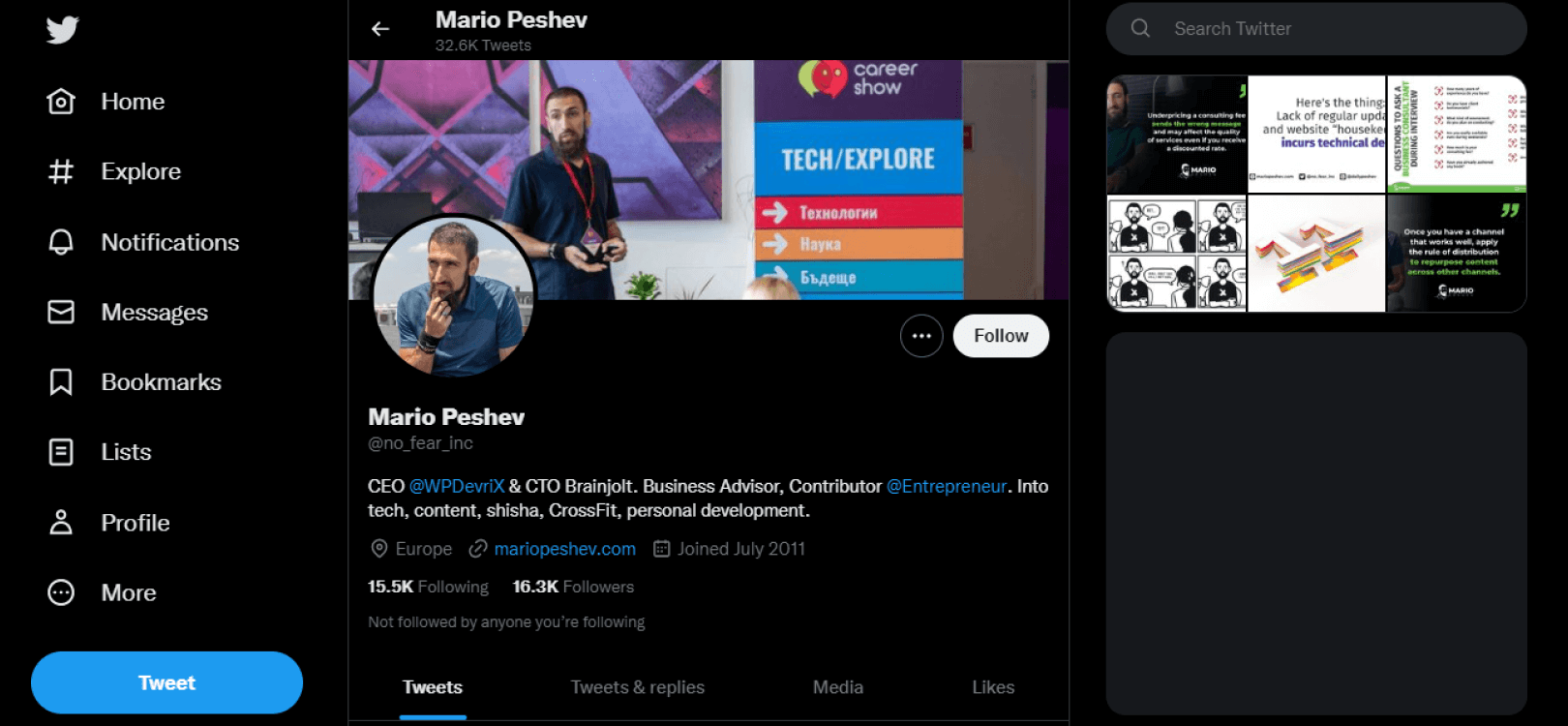
You can create the perfect roundup article by applying the following rules:
- Create a list of experts and reach out to them. When you know your topic and the possible questions, create your list of experts to contact for your blog. If you can’t find their email addresses, you can reach them on their social media profiles. Ask them for their opinion and if they are interested to be featured in your expert round-up article. Most importantly, confirm to them that you will include a link to their site in their blog answer.
- Good topics and solid questions. If you want to feature expert opinions in your blog, you’ll need to provide the experts with questions and topics that allow them to talk about their expertise and give an opinion about the topic(s). For example, you can ask the expert, “What is the best strategy to conduct SEO campaigns?” Each expert will have a different and compelling answer, so you need to give them space to express their knowledge and not fully cut them out with strict guidelines.
- Gather answers, write and publish. Link back to every expert that is featured in your post. Kindly send them a follow-up email to let them know that the article is live on your website/blog. Also, don’t forget to ask them to share it with their audience.
11. Write Guest Posts
Guest blogging is the practice of writing an article for a blog (that isn’t your own) with the intention of increasing traffic to your website. This will give you exposure and help you build relationships with your target audience.
The gains from guest blogging are more than clear: Getting backlinks from authority websites in your industry, spreading your knowledge and expertise, and increase of traffic to your website.
But, how can you achieve these results? Follow the steps below to achieve SEO campaign success with your guest blogging:
- Find the blogs where you can publish. Before you start writing your guest article, you need to know where to submit the article. Go to Google and type in “your keyword” + “contribute to our blog” or “write for our blog”. You can also go to Twitter search and type in “your keyword” + “guest post”. Twitter will provide you with fresh results, and you will know the most responsive websites where you can submit your blog post. Make a list of the top blogs where you want to be featured.
- Inspect the blogs where you want to publish. Look for authority blogs in your industry that have a big audience if you want to be widely recognized as an industry expert. Read the guest post guidelines carefully and don’t bother to contribute if you can’t insert your link in the guest article.
- Engage with the website owners. You can’t approach experts in your industry if you don’t form a relationship with them first. Engage with them on social media first, make valuable comments on their blog posts. Email just to let them know what a great contributor they are to the industry, do not pitch your guest article right away!
- Choose an appropriate article topic. After you’ve engaged with your target blogs, you can think about the topic that you want to contribute. Your article topic needs to fit perfectly with the authority blog that you’ve targeted. So, if you can produce content that provides value to their audience, you can be confident that they will accept your contribution.
- Pitch your blog topic with a personalized email. There’s nothing better to hit the sweet spot than personalized email. A generic email will either go to the spam box or be tossed away. The simpler the email, the better. Here’s an example of a personalized email to guest post on a blog:
Hey [Name],
Came across your article about [topic] and I love the part/section where you [told a profound thing]. I enjoy reading your blog [Reason why].
I’m [Full Name], a [your profession] and a blogger that writes content like [Your Published Article Here] that’s been featured on [Authority publication]. Reading through your blog helped me come up with topics that your audience might be interested:
Topic 1
Topic 2
Topic 3I would love to contribute to your blog with an article about one of the given topics above. Would love to discuss more about it if you’re interested. Also, I’m open to new blog ideas.
Would you mind if I send you an outline or a draft write-up?
Thanks,
–[Your Full Name]
This approach allows you to start your email with something personal and prominent about the person. Then, you suggest specific topics to be featured on the blog, and you rely on your previous experience with the topics. After they’ve accepted your guest post idea, you can start crafting the content that can bring value to the blog’s audience, a.k.a. your new audience.
12. Use Deep Linking
Deep Linking is an SEO technique that is practiced by using anchor text to link other pages from your blog. By performing deep linking, you show Google that your website, especially your blog, has richness and depth. This encourages Google to index more of your website.
Your older blog posts and their relevant landing pages can still drive some serious traffic to your website.
That’s why you should continuously link to them to build your website anatomy. Without a proper internal linking process, you will only confuse Google’s algorithm when it tries to learn more about the context of your website.
When you start the process of proper internal linking of all your pages, you will enhance the overall SEO value of your internal pages and improve their search ranking for long-tail keywords too.
Wrapping Up
SEO trends change quickly. Your business needs to adapt quickly If you want to stay ahead of your competition in the search engine rankings you need to continuously improve your website, your content, and monitor the competitors at the same time to know how to further outrank them online.
The SEO tactics mentioned above may not be easy to implement, but they can be unbelievably effective for your business. You only need to focus on quality content and good copywriting. It’s all about providing your target audience with the relevant content.
Focus on the intent of the users and try the 12 tips above as a game plan for your SEO campaign success.
